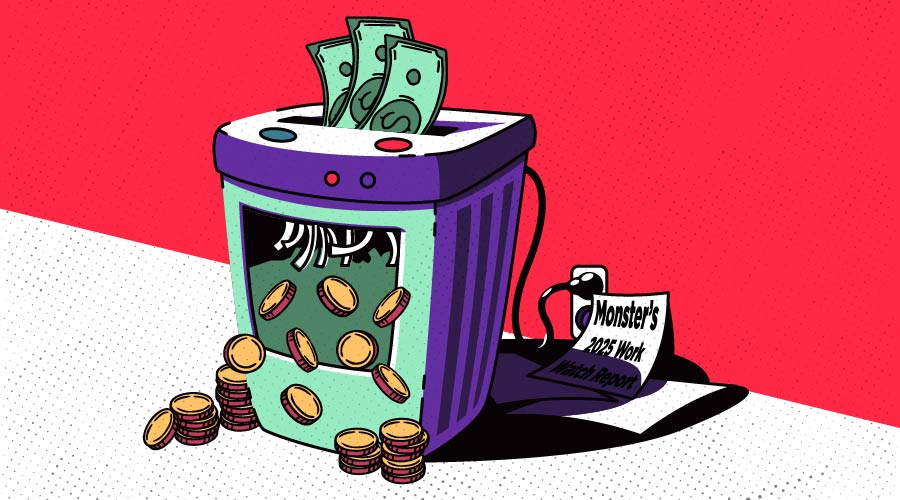- Have any questions?
- 888-432-8878
- steve@sebackground.com

After Failed Negotiations, NYT Workers Strike to Continue Indefinitely
November 6, 2024
Amazon Workers Protest CEO’s 5-Day Office Policy
November 7, 2024The Internal Revenue Service is making some changes to how much you can contribute to your 401(k) plans. As per the IRS, 401(k) limits for 2025 have been increased to an annual amount of $23,500, up from $23,000. This increase in the 401(k) cap brings up the annual individual contribution limit by $500 and equals the change we saw going from 2023 into 2024.
“The annual contribution limit for employees who participate in 401(k), 403(b), governmental 457 plans, and the federal government’s Thrift Savings Plan” has been increased equally, according to the IRS highlights. As many citizens remain wary about their ability to save for the long term and find financial security, 401(k) plans continue to be a key part of their savings strategy.

Image: Freepik
IRS Announces 401(k) Limit for 2025—Presents a $23,500 Cap
The IRS annually resets the caps on retirement contribution plans when necessary to help individuals and their employers keep up with the impacts of inflation. Amidst the changing trends of the rising cost of living and concerns around social security savings, the IRS has announced a $500 401(k) cap increase for 2025.
As a bonus, the limit has been raised for alternate plans such as the 403(b) and the federal government’s Thrift Savings Plan by the same margin. Spilt throughout the year, this will mean a cap of around $1,958 per month or $980 semimonthly.
401(k) Catch-up Contribution Limits for Employees 50 and Over
There are no changes to be seen for the catch-up contribution limit for employees aged 50 and above who participate in 401(k), 403(b), 457, and Thrift Savings Plans so the number remains at $7,500 for 2025. Individuals investing in these plans who also meet the criteria of being above 50 can therefore contribute up to $31,000 in 2025.
Under the SECURE 2.0 Act, employees aged between 60 to 63 have a slightly higher catch-up contribution limit of $11,250, instead of $7,500. This will allow them to save more in their last few working years before they turn to retirement.
IRAs and SIMPLE Retirement Accounts—Understanding the Caps
In terms of the IRS retirement contribution plans for the IRA, the limit remains unchanged from what was set for the last two years, which puts it at $7,000. The IRA catch-up contribution limit for people over 50 and above has also remained unchanged from 2024, standing at $1,000.
For those who utilize a Savings Incentive Match Plan for Employees (SIMPLE) retirement account, the limit has been raised to $16,500, up from $16,000. The catch-up contribution limit for employees aged 50 and over has not been changed from the $3,500 that was set this year.
Certain SIMPLE retirement accounts that fall under the purview of the SECURE 2.0 Act, have a higher contribution cap of $17,600. For those who fall under the criteria for the catch-up contribution limit, the cap is set at $3,850.
Will the 401(k) Cap Increase Be Enough to Help Employees Save for Retirement?
The 2025 IRS 401(k) limit, as well as the cap set for the other plans, increase the amount employees can contribute to their fund, but there are some concerns about saving enough from a monthly paycheck to actually contribute to these plans. Older workers have expressed their fears about the depleting social security fund and their own limited savings, and many feel the money will be insufficient for them to ever retire comfortably.
Recent reports have shown that prominent work trends of the present can have long-term consequences on savings as well. Job hoppers, while looking for better pay, may put their savings at risk by moving between organizations too frequently. These numbers can be helped by employers ensuring automatic enrollment into these plans, but it is not easy to guarantee at every organization.
A study by Vanguard found that the average employee contribution to their 401(k) plans has reached record-high deferral rates of 7.4% and people are participating in 401(k) plans more enthusiastically. This is reassuring to see, as more American workers need to start saving for the long term, but inflation and the increased cost of living have made it difficult.
Young Gen Z workers are equally affected by these concerns as many are losing sleep over their financial future and the struggles of affording a job in the present. As the job market and economy start to balance out, it is imperative that employees start looking into 401(k) plans and other savings opportunities to guarantee their well-being in the long run.
The post Looking Ahead, the IRS Raises 401(k) Contribution Limit to $23,500 for 2025 appeared first on The HR Digest.
Source: New feed




